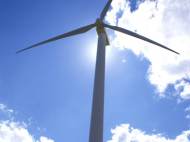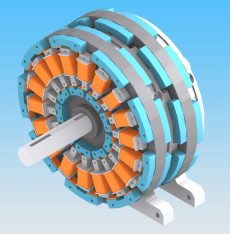Increasing the wind power harnessing efficiency – VIEG
 Clean, renewable energy is freely available – in the form of wind, sun, water and potential other forms we haven’t discovered yet. However, harnessing the energy with reliability and in a cost-effective manner remains a barrier. Wind power is one of the fastest growing alternative energy markets and researchers all over the world are developing wind turbines which are more efficient, reliable and resilient. We are going to write several articles regarding some of those improvements in our future articles. This article is about the Variable Input Electrical Generator (VIEG) which is being developed by EXRO Technologies Inc, from Vancouver.
Clean, renewable energy is freely available – in the form of wind, sun, water and potential other forms we haven’t discovered yet. However, harnessing the energy with reliability and in a cost-effective manner remains a barrier. Wind power is one of the fastest growing alternative energy markets and researchers all over the world are developing wind turbines which are more efficient, reliable and resilient. We are going to write several articles regarding some of those improvements in our future articles. This article is about the Variable Input Electrical Generator (VIEG) which is being developed by EXRO Technologies Inc, from Vancouver.
Jonathan Ritchey started its development in order to solve the losses which occur due to the inconsistency of wind speed. If the wind blows too soft, a heavy gearbox is needed to translate the slow speed of the blades into a faster speed the traditional generator is designed for. If it blows too hard, the turbine must cast away the excess energy in order to avoid damaging the gearbox and other parts of the turbine. VIEG is optimized to handle the variable input speeds common to wind power.
Basically, the VIEG works on the same principles as traditional generators: magnets attached to a rotating shaft create a current as they pass stationary copper coils arrayed around the shaft. However, the VEIG uses modular coil and magnet sets or stages that automatically turn on or off depending on wind speed.
With 12 years of Ritchey’s own research behind it, the VIEG doesn’t depend on a gearbox’s mechanical transmission. Instead, it’s built with an internal electronic controller that matches generator resistance to the wind energy available by turning stages on or off. Essentially, the VIEG adapts to the wind rather than forcing the shaft speed to adapt to the needs of the generator.
“The controller senses the available energy and output in real time and uses high-speed electronic switching to alter output and resistance,” Ritchey explains.
The result, he says, is a self-adapting system with a lower cost and weight and a broader operational range than traditional generators. “With the VEIG, we’re able to extract more energy by dynamically right-sizing the generator to the wind thereby operating at close to peak efficiency at all times.”
Without the need for additional shafts, mechanical gears or clutches, Ritchey says their system keeps costs down by reducing the size and weight of the overall system. Another benefit is the ability to assemble the VIEG a stage at a time, on site. This reduces construction costs and complexity, and also allows repair crews to replace a single stage rather than remove the entire generator.
While the current focus has been on wind applications, “there are also significant opportunities for this technology in non-renewable markets,” he says, revealing that the company expects to team with manufacturers and start turning out portable gas powered generators in 2010, with small wind VIEGs shortly after that. Big wind applications could take until 2011. “It isn’t a huge undertaking to develop the VIEG for portable generators,” he says. “Then we’d put the money toward designing for other renewable applications.”










Wind power is good although it looks a bit bulkier compared to solar cells. i am trying to build a small wind generator at home too.
Variable Input Electrical Generator (VIEG) is expected to lead to more efficient wind turbines of large size. With ever expanding wind energy especially in USA, Germany, Spain, China, India, UK, Denmark etc., the new technology will give impetus for wider exploitation of Wind around the globe.
Dr.A.Jagadeesh Nellore (AP), India